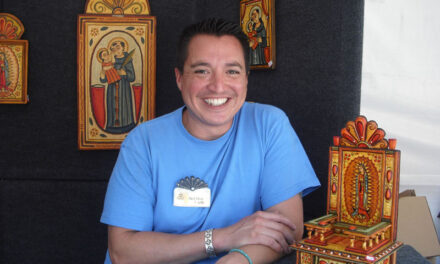Rock ‘n’ roll icon and multi-labeled Deep Purple has been entertaining listeners since be-fore 1969, and lead singer Ian Gillan has been a part of the ever-changing face of Deep Purple since almost the very beginning. So, after all these years in and out of one of the rocking-est bands in the world, what bothers Gillan the most about his profession?
“There was some resentment in the band, being classified as classic rock,” Gillan said. “We went from progressive rock, to heavy metal to classic rock or grandpa rockers, or whatever we are now. Solo artists don’t get classified, David Bowie is David Bowie, Sting is Sting; in my opinion, Led Zeppelin is Led Zeppelin, and we’re Deep Purple.”
Gillan, who was a member of the Javelins and Episode 6 before he joined Purple in 1969, feels that this classification of music is an American invention. According to Gillan, in other countries, the band is classified only as rock ‘n’ roll and the rest depends on the band itself.
“If we get branded as classic rock, we get isolated and only get played in a limited sense on classic rock stations,” Gillan said. “I want people to hear us for not only what we’ve done, but also for what we’re doing now.”
Gillan has lived a rather turbulent rock ‘n’ roll life. After spending only four years with Deep Purple (1969-1973) he quit Purple for creative reasons. During that time, the band released five albums. including “Machinehead,” arguably one of their most successful. Gillan also appeared on the sound track for Andrew Lloyd Webber’s and Tim Rice’s concept album, “Jesus Christ Superstar.”
“When we were kids, it was a lot harder on us to lose band members, but, after a while, we thought of it as a family, as dysfunctional a family as there is, people grow up and move out, people get divorced, people die. We just tell ourselves ‘that’s life,’ and the band goes on.”
In 1973, Gillan left the band after being hospitalized for exhaustion. Gillan would go on to form the Ian Gillan Band and Gillan. In 1983, 10 years after he left Purple, Gillan joined up with another hard rock icon, Black Sabbath.
Gillan came back to Sabbath for five years between 1984 and 1989. Only 10 years ago, Gillan came back to Purple for what looks like a permanent stay.
In their current tour, Deep Purple has employed the help of a long-time friend of Gillan’s and a bandmate in the early days with Episode 6, Roger Glover.
“Roger is probably the closest thing I have ever had to a brother,” Gillan said. “He was very inspirational in the early days. He was very eclectic, he was into all things, and I was more into drinking and partying. He taught me how to enjoy the little things in life.”
Over the years, the band has recorded a number of different songs from “Highway Star,” about a guy and his car to “Smoke on the Water,” about the burning of the Montreuax Casino to “Hush,” a remake of Joe South’s old hit. But in recent years, Gillan has reached a turning point in his life.
“One day not too long ago, Roger and I were walking along a beach in Portugal and it suddenly dawned on us that we can’t keep acting like teenagers and writing songs about fast cars and loose women,” Gillan said. “However, we realized that we can write songs about life and be just as successful. That was a major turning point in my life.”
Gillan will be touring with Deep Purple for the remainder of the year. It isn’t the original band, but you can’t tell that from listening. Don Airey is taking the place of Jon Lord at the keyboards. Roger Glover is on the guitar. Steve Morse, of the Dixie Dregs and a short stint with Kansas, is playing bass, and Ian Paice sits behind the drums.
The band appeared at the Journal Pavillion on Sunday with the Scorpions and Dio.















